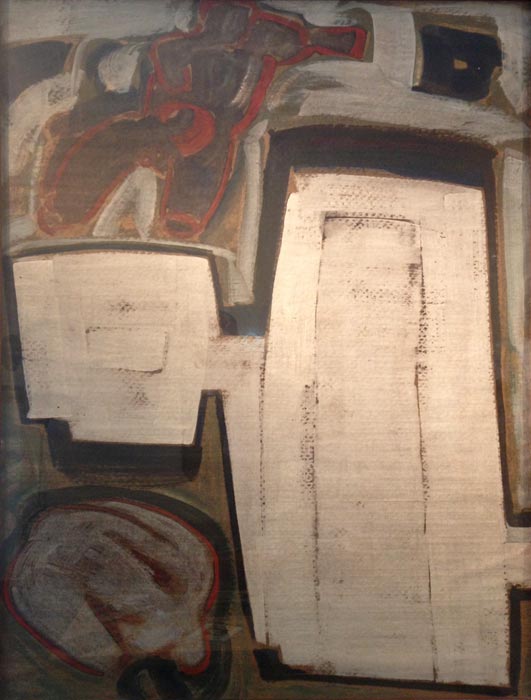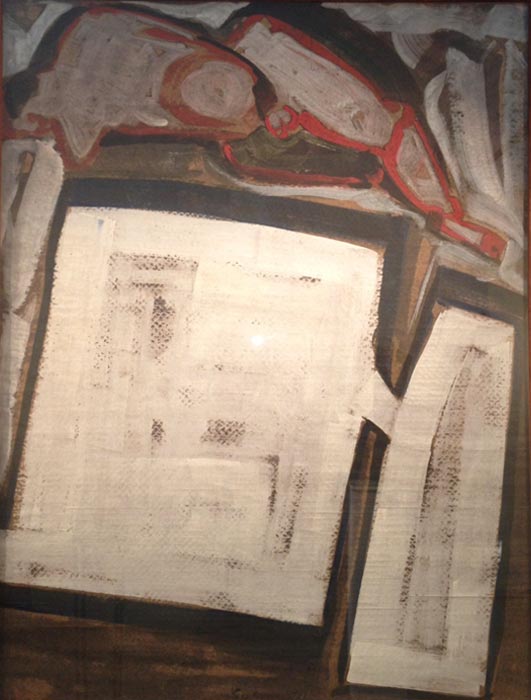The Hero's Frailties
Artist: Guy Anderson (1906–1998)
Materials: Oil on heavy paper, Signed & framed with plexiglass
Dimensions:
2 panels each 6 ft x 8 ft (1.8 m x 2.4 m)
Provenance: The Estate of Guy Anderson
Exhibited: Evergreen State College, Olympia, WA 1987 - 2007
PRICE ON REQUEST


Guy Anderson grew up in a semi-rural setting north from Seattle, and some of his early paintings portrayed his family home. A piano was an important presence in that house. As a child he used to commute to the Seattle Public Library by bus to study their art books.
In 1929, he won a Tiffany Foundation scholarship and spent the summer studying at the Tiffany estate on Long Island, New York. That year he also met the painter Morris Graves and they became lifelong friends. At one time these two traveled together to California, and they also spent time painting up near Monte Cristo in the North Cascades. In 1939, Anderson taught at the Spokane Art Center as part of the Works Progress Administration (WPA) a Federal Art Project during and after the Great Depression. Anderson also worked for Dr. Richard Fuller in the Seattle Art Museum during years when it was housed in the Volunteer Park location, which enabled his close inspection of Asian paintings and antiquities.
Anderson later left Seattle and spent the better part of his life in La Conner, where he found inspiration from the vast skies and natural settings of beaches- where he gathered rocks and driftwood that he composed around his rustic home in various assemblages. The American pacific northwest natural world was always a powerful source of inspiration for this painter.
The work ranged across the years, from densely worked and tightly composed figurative images of northwest landscape to large, sweeping brushstrokes with flowing, symbolic and iconographic forms. The male nude-often placed horizontally- figures prominently in many of his paintings. His works are often inspired by,and often titled after, Greek Mythology and Native American iconography.
He began painting large works on roofing paper purchased from the local lumber company. Working with large paper on the floor during this period in the studio above his living room. Anderson used thinned oil paint and large brushes. The scale of the paper enabled his brushstrokes to become expansive and expressive, while its texture gave unexpected complexities which he valued.
In 1975, he was awarded a Guggenheim Fellowship. Among other things, the award supported his travelling in Europe with friends and fellow artists Clayton and Barbara James. He was awarded a Lifetime Achievement Award at Seattle Center in 1993, and many who knew him personally considered him a "living treasure." Anderson was a complex, affable, and generous man with a wide ranging mind. His paintings can be read in many ways, but he cherished the premise of the human figure-a prominent feature in many of his works-as being symbolic of the journey of life.
